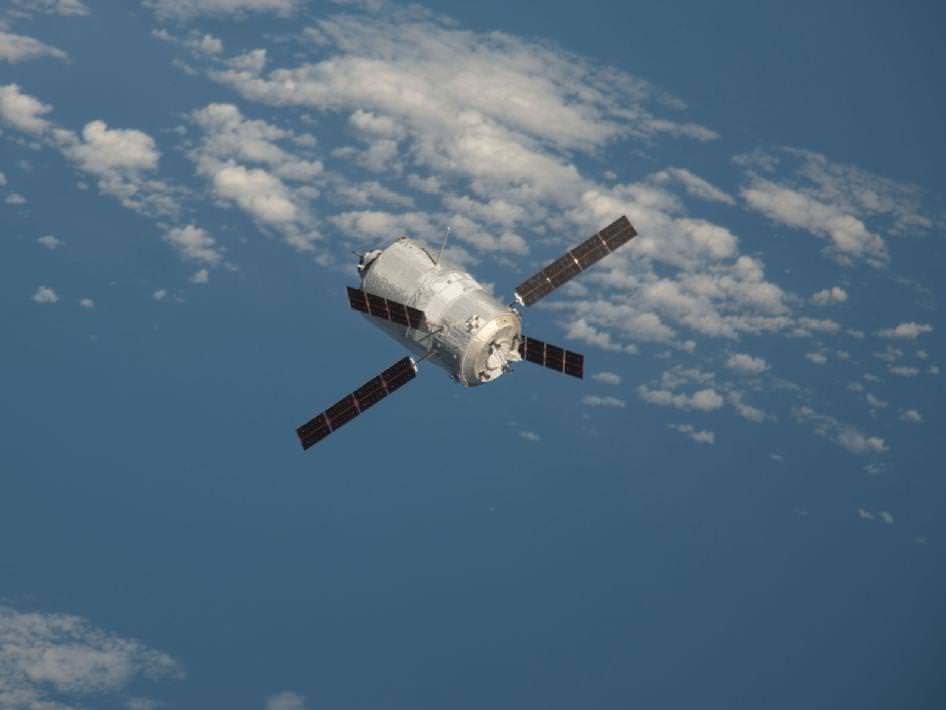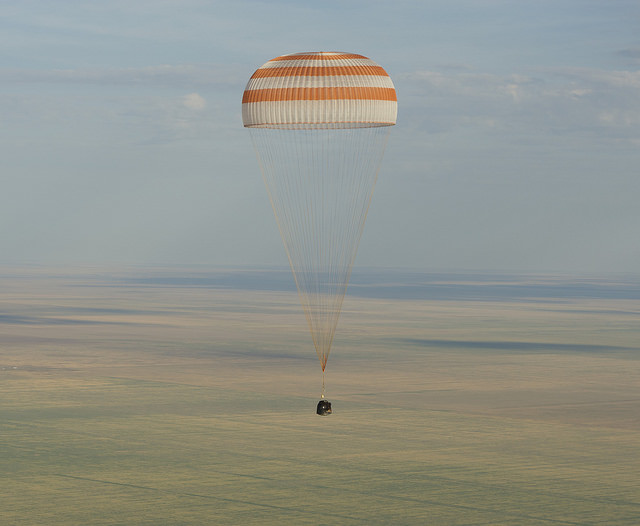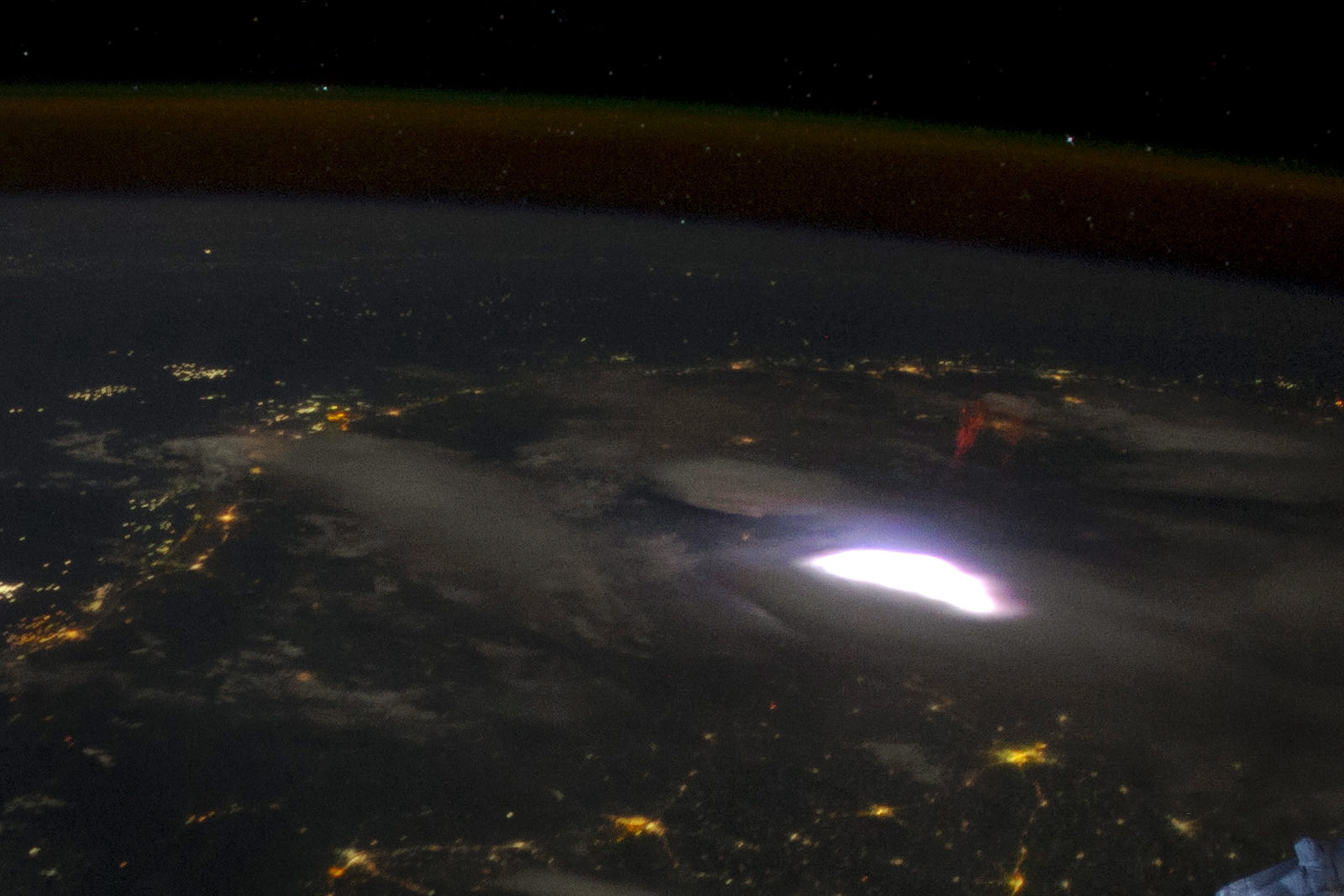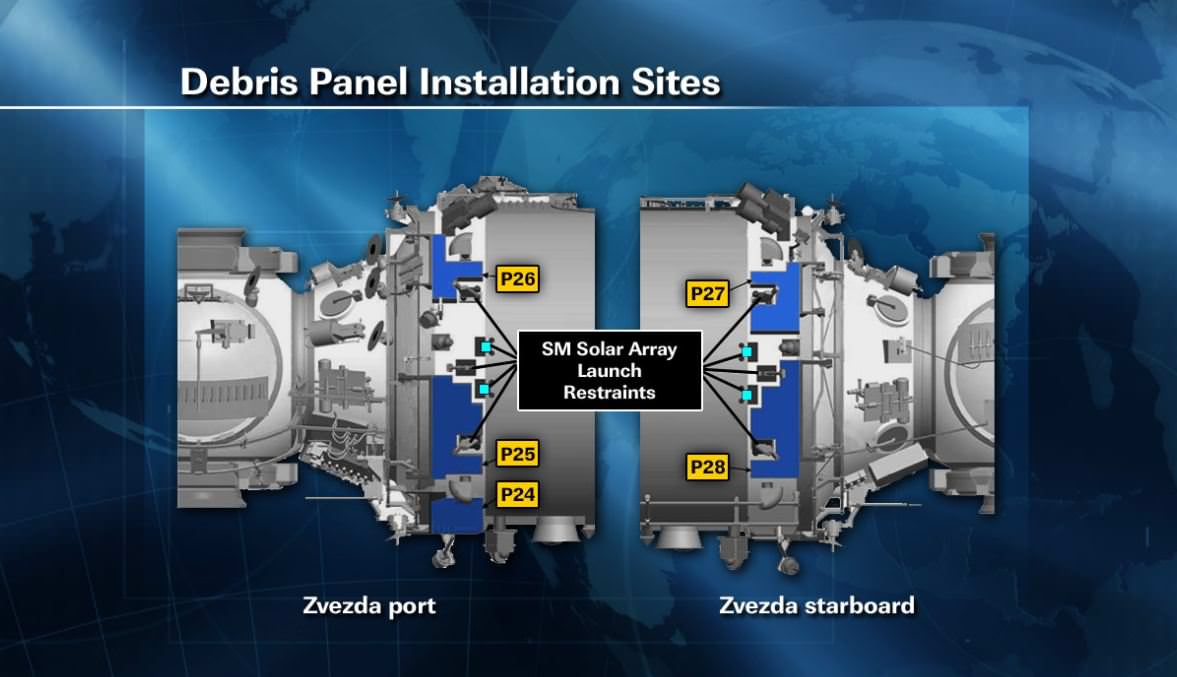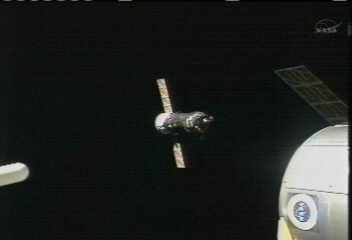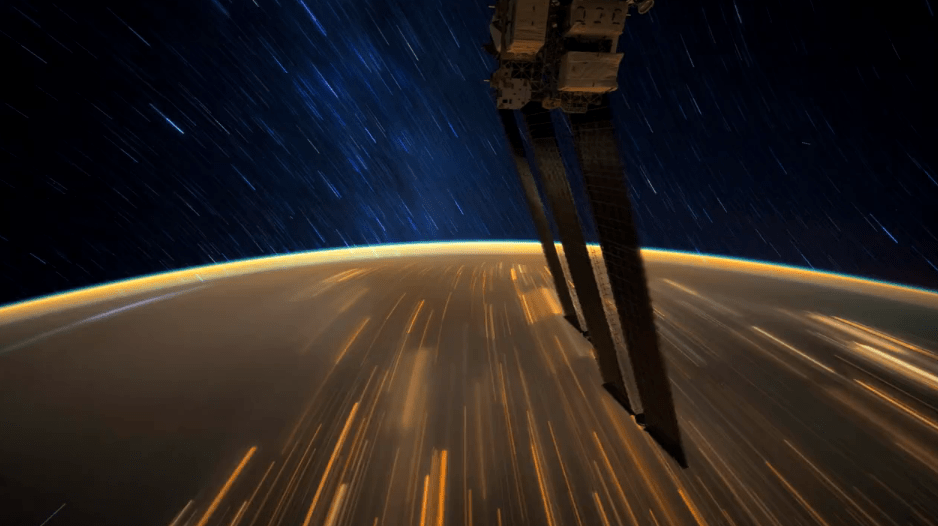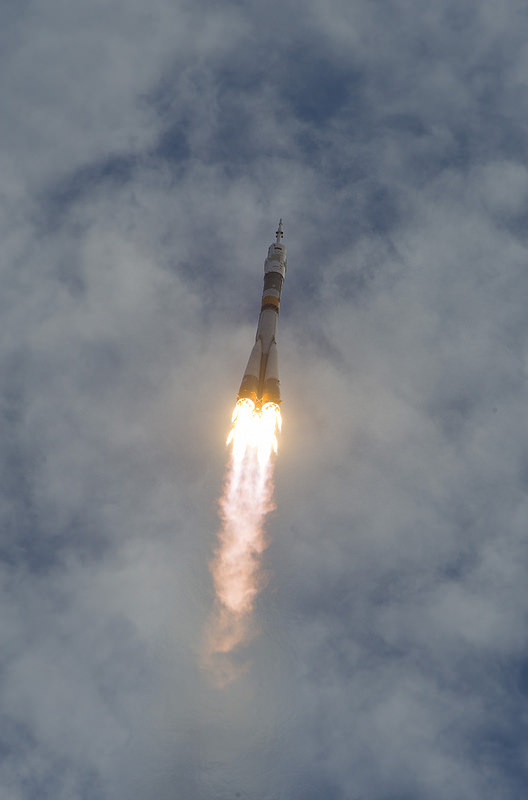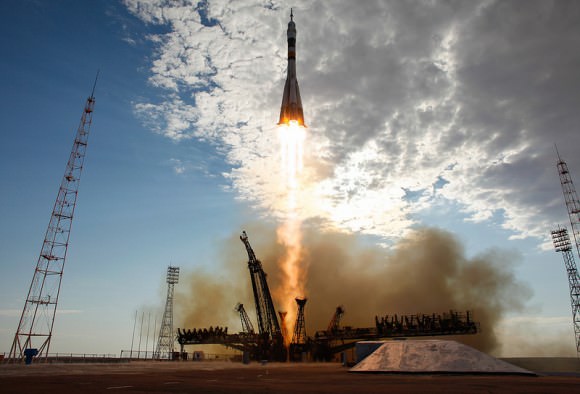After a three-day delay, the European Space Agency’s “Edoardo Amaldi” Automated Transfer Vehicle (ATV-3) undocked from the aft port of the International Space Station’s Zvezda service module at 21:44 UTC (5:44 p.m. EDT) on Friday.
Tuesday’s initial attempt to undock the European cargo ship was called off due to a communications error between the Zvezda module’s proximity communications equipment and computers on the ATV. Russian flight controllers resolved the problem, but then an additional delay occurred because of the possibility of two pieces of space debris coming close to the ISS, and the ATV would have been used to perform an avoidance maneuver; however, it was later deemed the debris posed no threat.
Image of the ATV-3 when it reached the International Space Station on March 28, 2012. Credit: NASA TV
Expedition 33 Flight Engineers Yuri Malenchenko and Aki Hoshide, who together closed up the hatches to ATV-3 Monday, monitored its automated departure from a control panel inside Zvezda. Meanwhile, Commander Suni Williams photographed the departing space freighter to document the condition of its docking assembly.
ATV-3, now filled with trash and unneeded items, backed away to a safe distance from the orbiting complex after undocking. Once it reaches distance about 4,500 miles in front of the station, the European cargo craft will fire its engines twice on Tuesday, Oct. 2, to send it into the Earth’s atmosphere for a planned destructive re-entry that evening. As the ATV-3 plunges back to the Earth, the Re-Entry Breakup Recorder that Hoshide installed inside the vehicle will collect and transmit engineering data to enhance the efficiency of spacecraft designs and minimize the hazards to people and property on the ground even in the case of an uncontrolled re-entry for future cargo ships.
“Edoardo Amaldi,” named for the 20th-century Italian physicist regarded as one of the fathers of European spaceflight, delivered 7.2 tons of food, fuel and supplies to the orbiting complex after docking to the station March 28. The fourth ATV, named “Albert Einstein,” is slated to launch in April 2013. More than 32 feet long — about the size of a traditional London double-decker bus – the ATV is the largest and heaviest vehicle that provides cargo resupply for the station.

